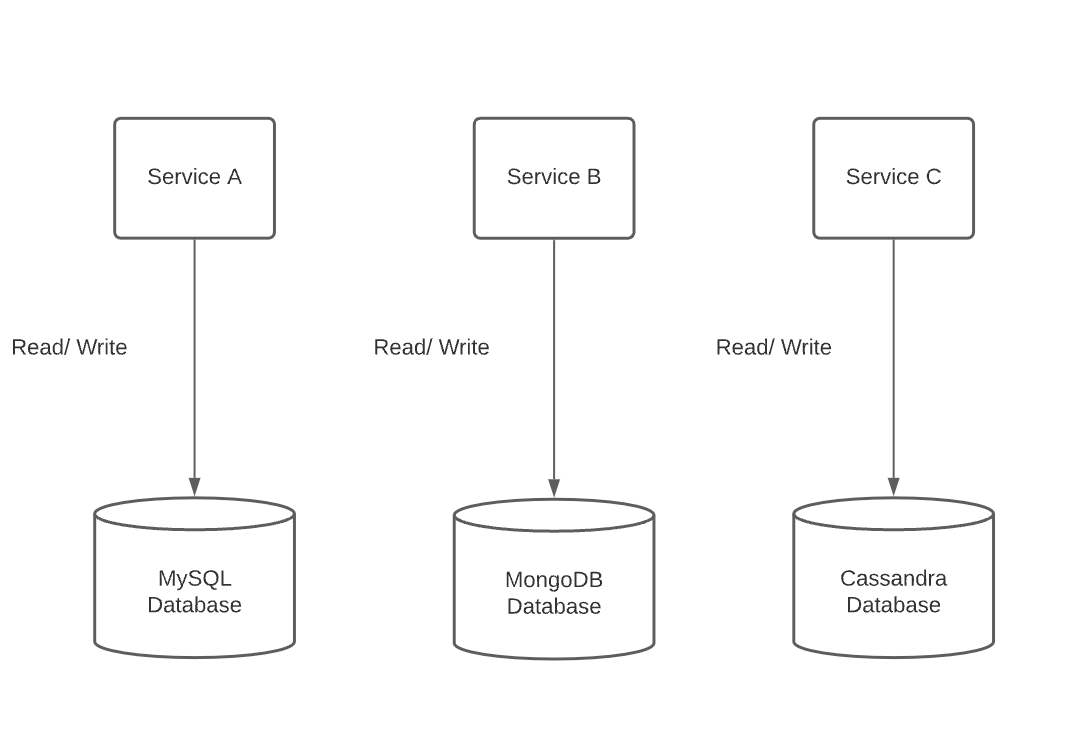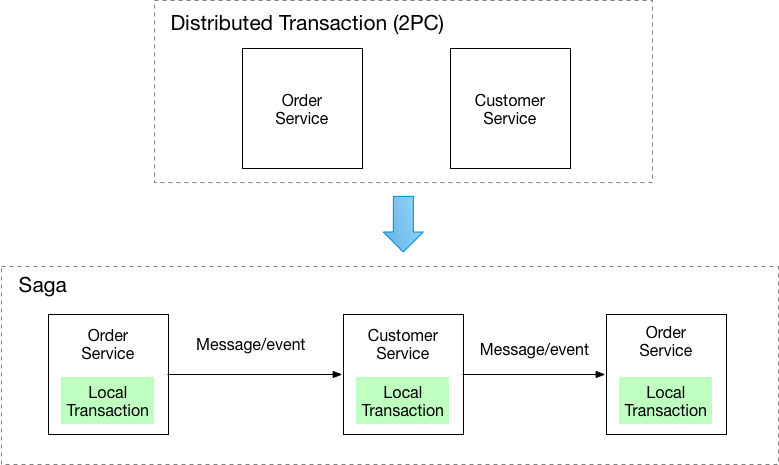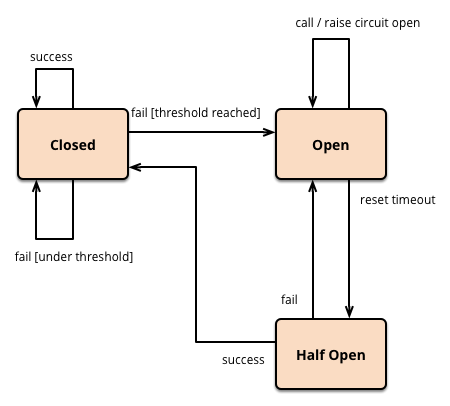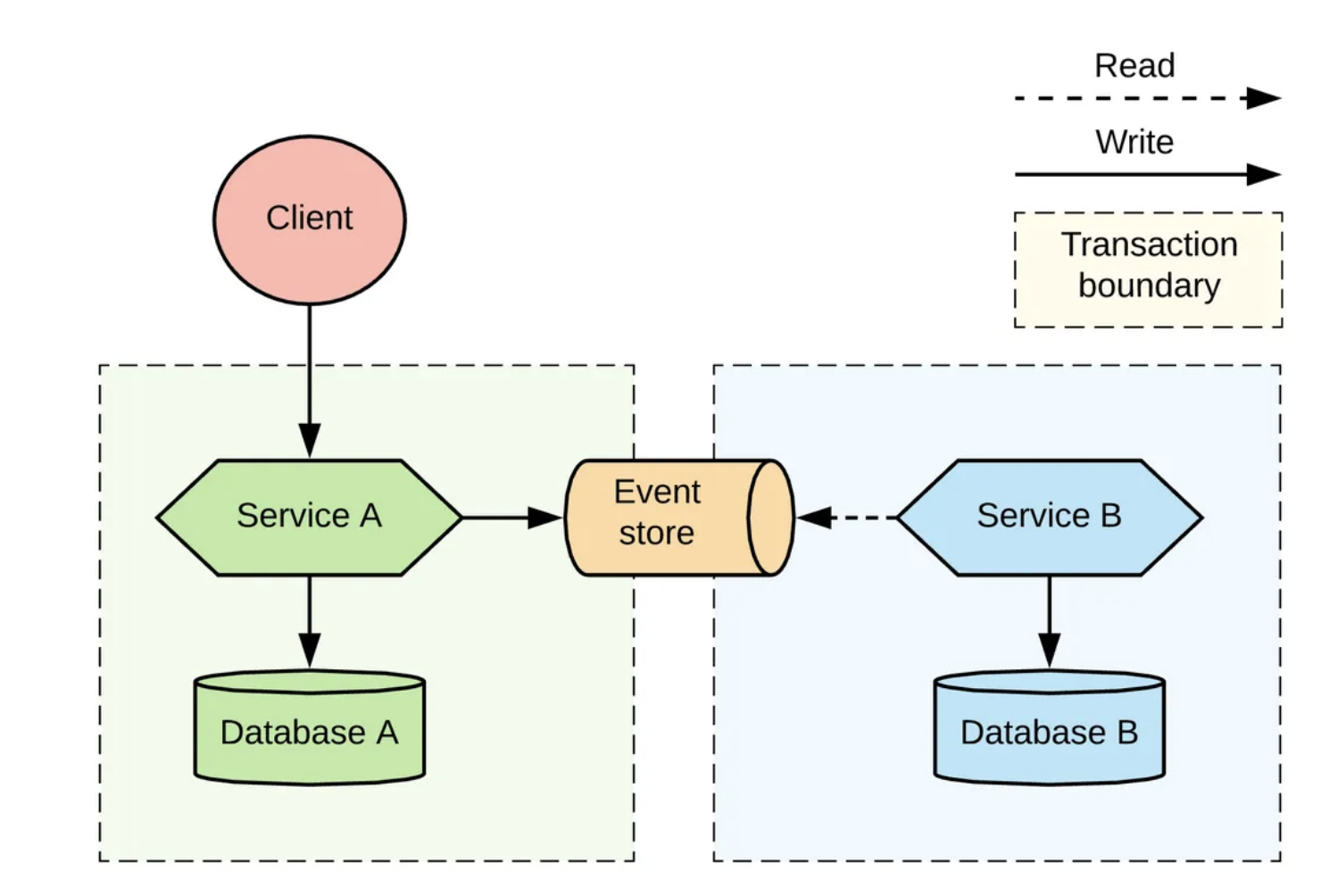Microservices Design Patterns for Highly Resilient Architecture
Microservices design patterns provide tried-and-true fundamental building blocks that can help write code for microservices.
Join the DZone community and get the full member experience.
Join For FreeThe monolithic architecture was historically used by developers for a long time — and for a long time, it worked. Unfortunately, these architectures use fewer parts that are larger, thus meaning they were more likely to fail in entirety if a single part failed. Often, these applications ran as a singular process, which only exacerbated the issue.
Microservices solve these specific issues by having each microservice run as a separate process. If one cog goes down, it doesn’t necessarily mean the whole machine stops running. Plus, diagnosing and fixing defects in smaller, highly cohesive services is often easier than in larger monolithic ones.
Microservices design patterns provide tried-and-true fundamental building blocks that can help write code for microservices. By utilizing patterns during the development process, you save time and ensure a higher level of accuracy versus writing code for your microservices app from scratch. In this article, we cover a comprehensive overview of microservices design patterns you need to know, as well as when to apply them.
Key Benefits of Using Microservices Design Patterns
Microservices design patterns offer several key benefits, including:
- Scalability: Microservices allow applications to be broken down into smaller, independent services, each responsible for a specific function or feature. This modular architecture enables individual services to be scaled independently based on demand, improving overall system scalability and resource utilization.
- Flexibility and agility: Microservices promote flexibility and agility by decoupling different parts of the application. Each service can be developed, deployed, and updated independently, allowing teams to work autonomously and release new features more frequently. This flexibility enables faster time-to-market and easier adaptation to changing business requirements.
- Resilience and fault isolation: Microservices improve system resilience and fault isolation by isolating failures to specific services. If one service experiences an issue or failure, it does not necessarily impact the entire application. This isolation minimizes downtime and improves system reliability, ensuring that the application remains available and responsive.
- Technology diversity: Microservices enable technology diversity by allowing each service to be built using the most suitable technology stack for its specific requirements. This flexibility enables teams to choose the right tools and technologies for each service, optimizing performance, development speed, and maintenance.
- Improved development and deployment processes: Microservices streamline development and deployment processes by breaking down complex applications into smaller, manageable components. This modular architecture simplifies testing, debugging, and maintenance tasks, making it easier for development teams to collaborate and iterate on software updates.
- Scalability and cost efficiency: Microservices enable organizations to scale their applications more efficiently by allocating resources only to the services that require them. This granular approach to resource allocation helps optimize costs and ensures that resources are used effectively, especially in cloud environments where resources are billed based on usage.
- Enhanced fault tolerance: Microservices architecture allows for better fault tolerance as services can be designed to gracefully degrade or fail independently without impacting the overall system. This ensures that critical functionalities remain available even in the event of failures or disruptions.
- Easier maintenance and updates: Microservices simplify maintenance and updates by allowing changes to be made to individual services without affecting the entire application. This reduces the risk of unintended side effects and makes it easier to roll back changes if necessary, improving overall system stability and reliability.
Let's go ahead and look for different Microservices Design Patterns.
Database per Service Pattern
The database is one of the most important components of microservices architecture, but it isn’t uncommon for developers to overlook the database per service pattern when building their services. Database organization will affect the efficiency and complexity of the application. The most common options that a developer can use when determining the organizational architecture of an application are:
Dedicated Database for Each Service
A database dedicated to one service can’t be accessed by other services. This is one of the reasons that makes it much easier to scale and understand from a whole end-to-end business aspect.
Picture a scenario where your databases have different needs or access requirements. The data owned by one service may be largely relational, while a second service might be better served by a NoSQL solution and a third service may require a vector database. In this scenario, using dedicated services for each database could help you manage them more easily.
This structure also reduces coupling as one service can’t tie itself to the tables of another. Services are forced to communicate via published interfaces. The downside is that dedicated databases require a failure protection mechanism for events where communication fails.

Single Database Shared by All Services
A single shared database isn’t the standard for microservices architecture but bears mentioning as an alternative nonetheless. Here, the issue is that microservices using a single shared database lose many of the key benefits developers rely on, including scalability, robustness, and independence.
Still, sharing a physical database may be appropriate in some situations. When a single database is shared by all services, though, it’s very important to enforce logical boundaries within it. For example, each service should own its have schema, and read/write access should be restricted to ensure that services can’t poke around where they don’t belong.
Saga Pattern
A saga is a series of local transactions. In microservices applications, a saga pattern can help maintain data consistency during distributed transactions.
The saga pattern is an alternative solution to other design patterns that allow for multiple transactions by giving rollback opportunities.

A common scenario is an e-commerce application that allows customers to purchase products using credit. Data may be stored in two different databases: One for orders and one for customers. The purchase amount can’t exceed the credit limit. To implement the Saga pattern, developers can choose between two common approaches.
1. Choreography
Using the choreography approach, a service will perform a transaction and then publish an event. In some instances, other services will respond to those published events and perform tasks according to their coded instructions. These secondary tasks may or may not also publish events, according to presets. In the example above, you could use a choreography approach so that each local e-commerce transaction publishes an event that triggers a local transaction in the credit service.
Benefits of Choreography
After having explained the term itself let us take a closer look at the benefits of using a choreographed pattern for a microservice architecture. The most important ones are outlined in the bulleted list below:
- Loose coupling: Choreography allows microservices to be loosely coupled, which means they can operate independently and asynchronously without depending on a central coordinator. This can make the system more scalable and resilient, as the failure of one microservice will not necessarily affect the other microservices.
- Ease of maintenance: Choreography allows microservices to be developed and maintained independently, which can make it easier to update and evolve the system.
- Decentralized control: Choreography allows control to be decentralized, which can make the system more resilient and less prone to failure.
- Asynchronous communication: Choreography allows microservices to communicate asynchronously, which can be more efficient and scalable than synchronous communication.
Overall, choreography can be a useful design pattern for building scalable, resilient, and maintainable microservice architectures. Though some of these benefits can actually turn into drawbacks.
2. Orchestration
An orchestration approach will perform transactions and publish events using an object to orchestrate the events, triggering other services to respond by completing their tasks. The orchestrator tells the participants what local transactions to execute.
Saga is a complex design pattern that requires a high level of skill to successfully implement. However, the benefit of proper implementation is maintained data consistency across multiple services without tight coupling.
Benefits of Orchestration
Orchestration in microservice architectures can lead to some nice benefits which compensate for the drawbacks of a choreographed system. A few of them are explained below:
- Simplicity: Orchestration can be simpler to implement and maintain than choreography, as it relies on a central coordinator to manage and coordinate the interactions between the microservices.
- Centralized control: With a central coordinator, it is easier to monitor and manage the interactions between the microservices in an orchestrated system.
- Visibility: Orchestration allows for a holistic view of the system, as the central coordinator has visibility into all of the interactions between the microservices.
- Ease of troubleshooting: With a central coordinator, it is easier to troubleshoot issues in an orchestrated system.
When to use Orchestration vs Choreography
Whether you want to use choreography or orchestration in your microservice architecture should always be a well-thought-out choice. Both approaches bring their advantages but also downsides.

API Gateway Pattern
For large applications with multiple clients, implementing an API gateway pattern is a compelling option One of the largest benefits is that it insulates the client from needing to know how services have been partitioned. However, different teams will value the API gateway pattern for different reasons. One of these possible reasons is that it grants a single entry point for a group of microservices by working as a reverse proxy between client apps and the services. Another is that clients don’t need to know how services are partitioned, and service boundaries can evolve independently since the client knows nothing about them.
The client also doesn’t need to know how to find or communicate with a multitude of ever-changing services. You can also create a gateway for specific types of clients (for example, backends for frontends) which improves ergonomics and reduces the number of roundtrips needed to fetch data. Plus, an API gateway pattern can take care of crucial tasks like authentication, SSL termination, and caching, which makes your app more secure and user-friendly.
Another advantage is that the pattern insulates the client from needing to know how services have been partitioned. Before moving on to the next pattern, there’s one more benefit to cover: Security. The primary way the pattern improves security is by reducing the attack surface area. By providing a single entry point, the API endpoints aren’t directly exposed to clients, and authorization and SSL can be efficiently implemented.
Developers can use this design pattern to decouple internal microservices from client apps so a partially failed request can be utilized. This ensures a whole request won’t fail because a single microservice is unresponsive. To do this, the encoded API gateway utilizes the cache to provide an empty response or return a valid error code.

Circuit Breaker Design Pattern
This pattern is usually applied between services that are communicating synchronously. A developer might decide to utilize the circuit breaker when a service is exhibiting high latency or is completely unresponsive. The utility here is that failure across multiple systems is prevented when a single microservice is unresponsive. Therefore, calls won’t be piling up and using the system resources, which could cause significant delays within the app or even a string of service failures.
Implementing this pattern as a function in a circuit breaker design requires an object to be called to monitor failure conditions. When a failure condition is detected, the circuit breaker will trip. Once this has been tripped, all calls to the circuit breaker will result in an error and be directed to a different service. Alternatively, calls can result in a default error message being retrieved.
There are three states of the circuit breaker pattern functions that developers should be aware of. These are:
- Open: A circuit breaker pattern is open when the number of failures has exceeded the threshold. When in this state, the microservice gives errors for the calls without executing the desired function.
- Closed: When a circuit breaker is closed, it’s in the default state and all calls are responded to normally. This is the ideal state developers want a circuit breaker microservice to remain in — in a perfect world, of course.
- Half-open: When a circuit breaker is checking for underlying problems, it remains in a half-open state. Some calls may be responded to normally, but some may not be. It depends on why the circuit breaker switched to this state initially.

Command Query Responsibility Segregation (CQRS)
A developer might use a command query responsibility segregation (CQRS) design pattern if they want a solution to traditional database issues like data contention risk. CQRS can also be used for situations when app performance and security are complex and objects are exposed to both reading and writing transactions.
The way this works is that CQRS is responsible for either changing the state of the entity or returning the result in a transaction. Multiple views can be provided for query purposes, and the read side of the system can be optimized separately from the write side. This shift allows for a reduction in the complexity of all apps by separately querying models and commands so:
- The write side of the model handles persistence events and acts as a data source for the read side
- The read side of the model generates projections of the data, which are highly denormalized views

Asynchronous Messaging
If a service doesn’t need to wait for a response and can continue running its code post-failure, asynchronous messaging can be used. Using this design pattern, microservices can communicate in a way that’s fast and responsive. Sometimes this pattern is referred to as event-driven communication.
To achieve the fastest, most responsive app, developers can use a message queue to maximize efficiency while minimizing response delays. This pattern can help connect multiple microservices without creating dependencies or tightly coupling them. While there are tradeoffs one makes with async communication (such as eventual consistency), it’s still a flexible, scalable approach to designing a microservices architecture.
Event Sourcing
The event-sourcing design pattern is used in microservices when a developer wants to capture all changes in an entity’s state. Using event stores like Kafka or alternatives will help keep track of event changes and can even function as a message broker. A message broker helps with the communication between different microservices, monitoring messages and ensuring communication is reliable and stable. To facilitate this function, the event sourcing pattern stores a series of state-changing events and can reconstruct the current state by replaying the occurrences of an entity.
Using event sourcing is a viable option in microservices when transactions are critical to the application. This also works well when changes to the existing data layer codebase need to be avoided.

Strangler-Fig Pattern
Developers mostly use the strangler design pattern to incrementally transform a monolith application to microservices. This is accomplished by replacing old functionality with a new service — and, consequently, this is how the pattern receives its name. Once the new service is ready to be executed, the old service is “strangled” so the new one can take over.
To accomplish this successful transfer from monolith to microservices, a facade interface is used by developers that allows them to expose individual services and functions. The targeted functions are broken free from the monolith so they can be “strangled” and replaced.

Utilizing Design Patterns To Make Organization More Manageable
Setting up the proper architecture and process tooling will help you create a successful microservice workflow. Use the design patterns described above and learn more about microservices in my blog to create a robust, functional app.
Published at DZone with permission of Gaurav Shekhar. See the original article here.
Opinions expressed by DZone contributors are their own.

Comments